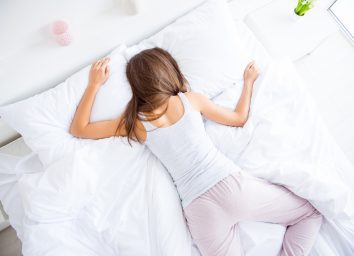It’s Worse to Sleep With These Clothes On Your Body, Say Experts
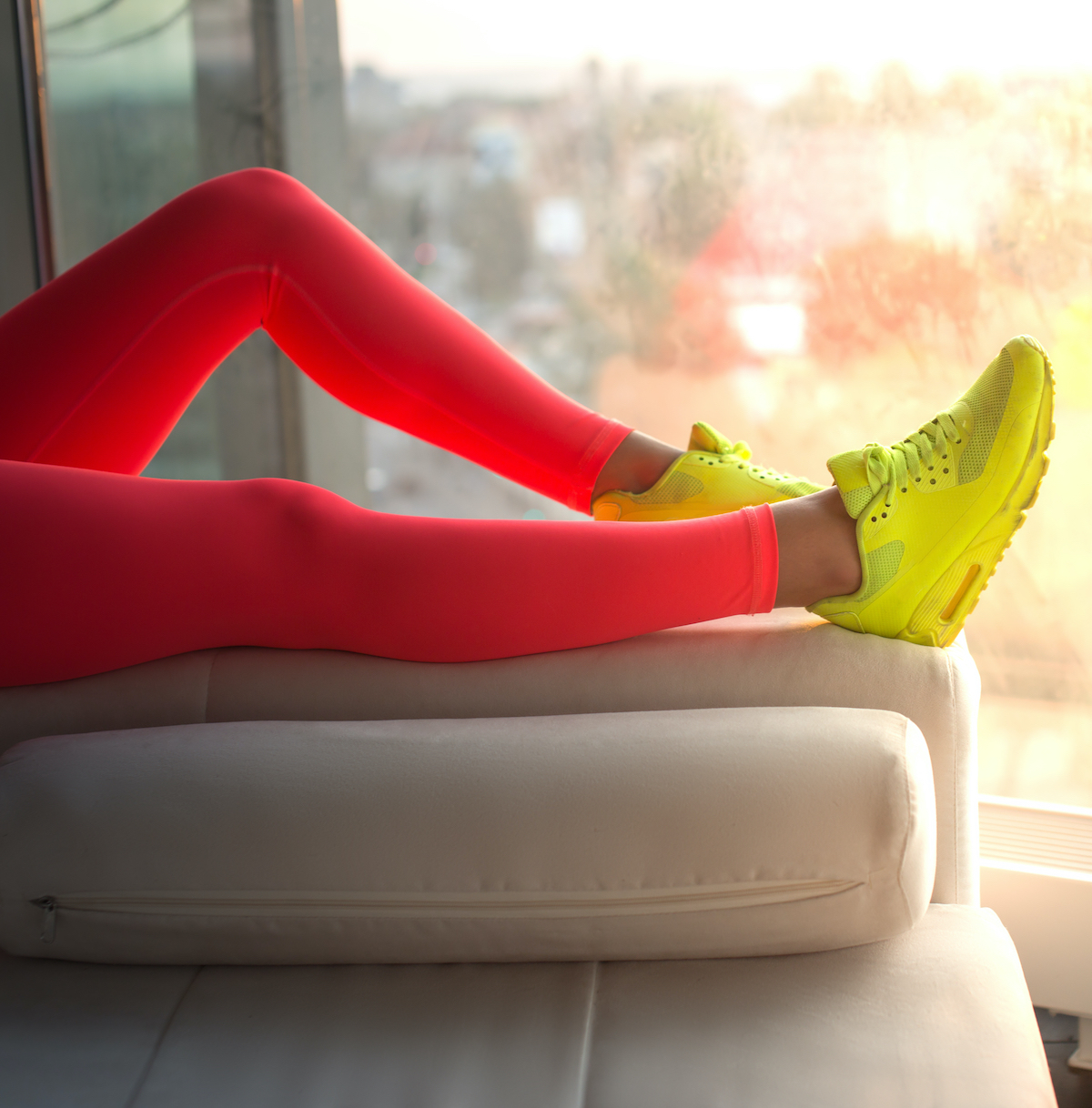
If you struggle to get better sleep, you probably already know the usual list of dos and don’ts you need to follow in an effort to get better rest. You need to keep your bedroom cool and dark, to power down your devices earlier, to avoid the snooze button at all costs, and to try and keep a stock bedtime. But there’s one sleep factor that is too often overlooked: What on earth should you wear? After all, the right choice of pajamas can make all the difference between 7-8 hours of restful bliss or a frustrating night spent tossing and turning.
The number one mistake people make in the PJ department, say sleep experts, is prioritizing style—or anything else, for that matter—over comfort. “The one thing everyone should avoid is clothing that makes them uncomfortable,” recommends Logan Foley, Managing Editor of Sleep Foundation. “Staying comfortable is the most important factor when thinking about pajamas.”
And contrary to the popular belief that wearing loose-fitting clothing is a bad idea (given that it cinches and tightens as you turn), sleep experts say that the biggest comfort killers between the sheets are restrictive and tight clothing items. Wearing tight pajamas or underwear to bed can restrict blood flow, increase core body temperature, and even lead to skin irritations and infections.
According to research published in Chronobiology International, restrictive clothing can disrupt and lower melatonin levels in the body, potentially disturbing the circadian rhythm and causing more sleep troubles. What’s more, “restrictive clothing doesn’t promote sleep because it constricts blood vessels in your body,” says Stephen Light, co-owner of Nolah Mattress. “The brain puts your body in an alert state because it thinks something’s wrong with your body. In this scenario, sleep becomes more difficult to achieve.”
So ditch those tights when you’re hitting the sack, and read on for a few more important dos and don’ts that pertain to your nighttime wardrobe. And for more great sleep advice, make sure you know why Listening to Taylor Swift Before Bed Will Wreck Your Sleep, Says New Study.
Do: Wear socks
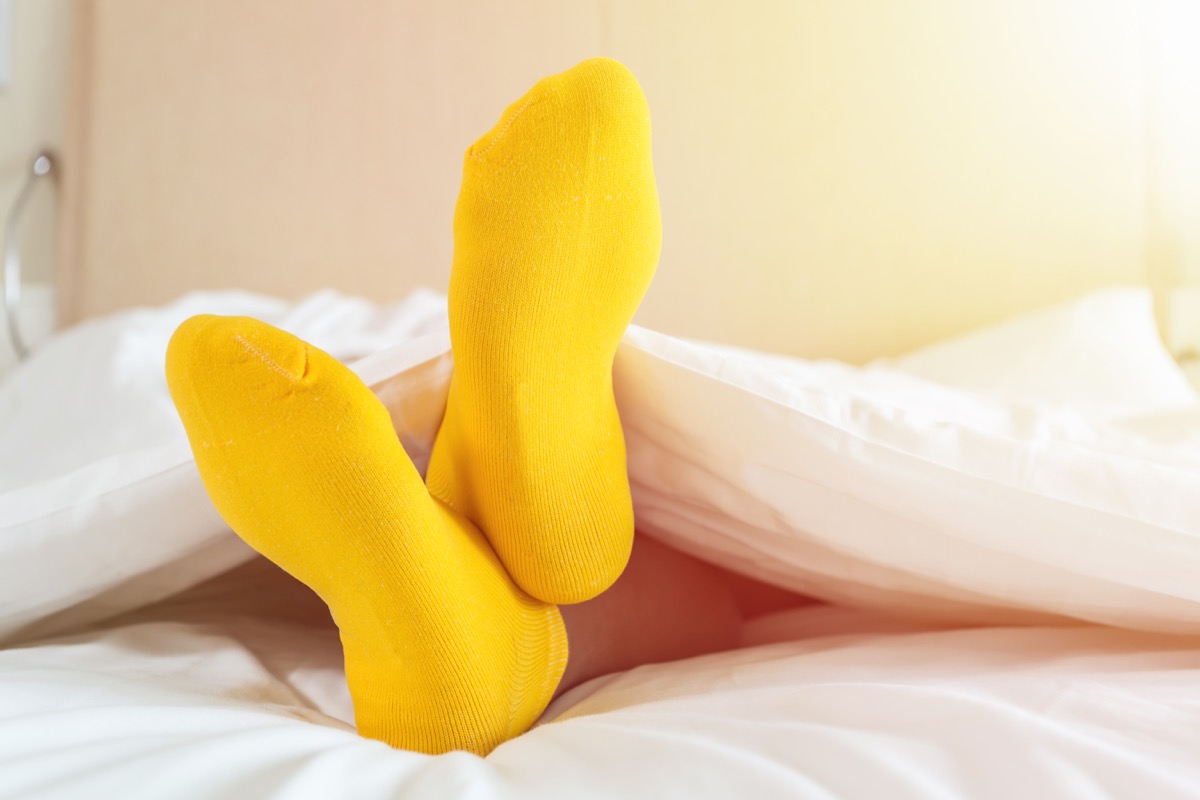
Adding a little extra warmth for our feet and toes can help facilitate a faster descent into dreamland. One study, published in the scientific journal Nature, concludes that warming the feet around bedtime “promotes rapid sleep onset.” A later research project published in the Journal of Physiological Anthropology expanded on those initial findings, with researchers concluding that wearing socks to bed within a cool environment shortens sleep onset time, extends average sleep length (by over 30 minutes!), and reduces sleep interruptions or awakenings throughout the night.
“Wearing socks to bed can help improve blood circulation,” explains Alex Savy, Certified Sleep Science Coach and Founder of Sleeping Ocean. “And when the blood flow increases, it’s easier for your body to drop its temperature (which is something it does naturally when falling asleep). When the body is able to regulate the core temperature faster, you, as a result, may fall asleep faster too.” And for more great sleep advice, know that It’s Worse to Sleep on This Side of Your Body, Says Science.
Don’t: Wear synthetic clothes
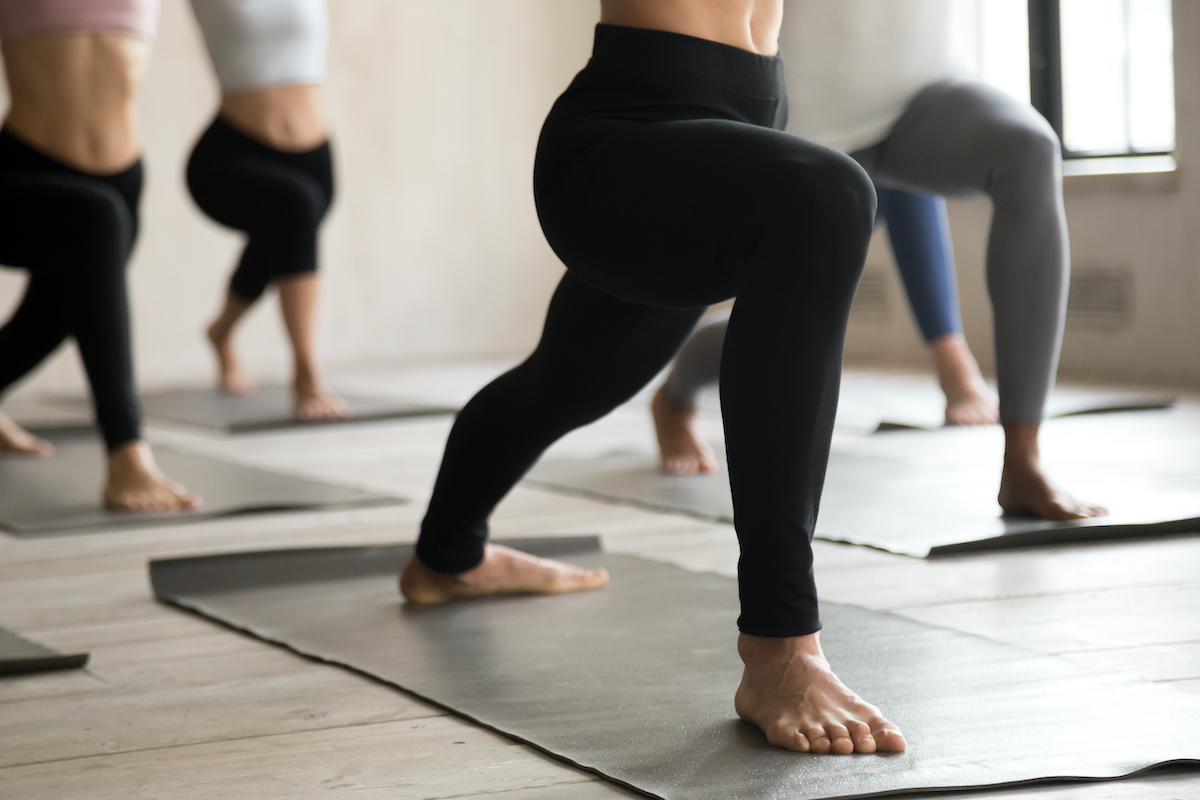
Synthetic fabrics like spandex, polyester, or nylon certainly have their place in the wider world of fashion, but it’s a big mistake to find yourself in bed wearing synthetic. These fabrics “trap” body heat and moisture, making it very easy to overheat while snoozing and wake up in a pile of sweat. Dora Kramer, M.D., the CEO of Siestio, told us that there’s no excuse for having polyester or any other synthetic variety anywhere near your body or bed at the end of the day. Besides just hampering your body’s ability to “breathe,” Dr. Kramer says synthetic clothes at bedtime have been linked to rashes, itching, dermatitis, and even a lowered sperm count in men.
Do: Wear wool
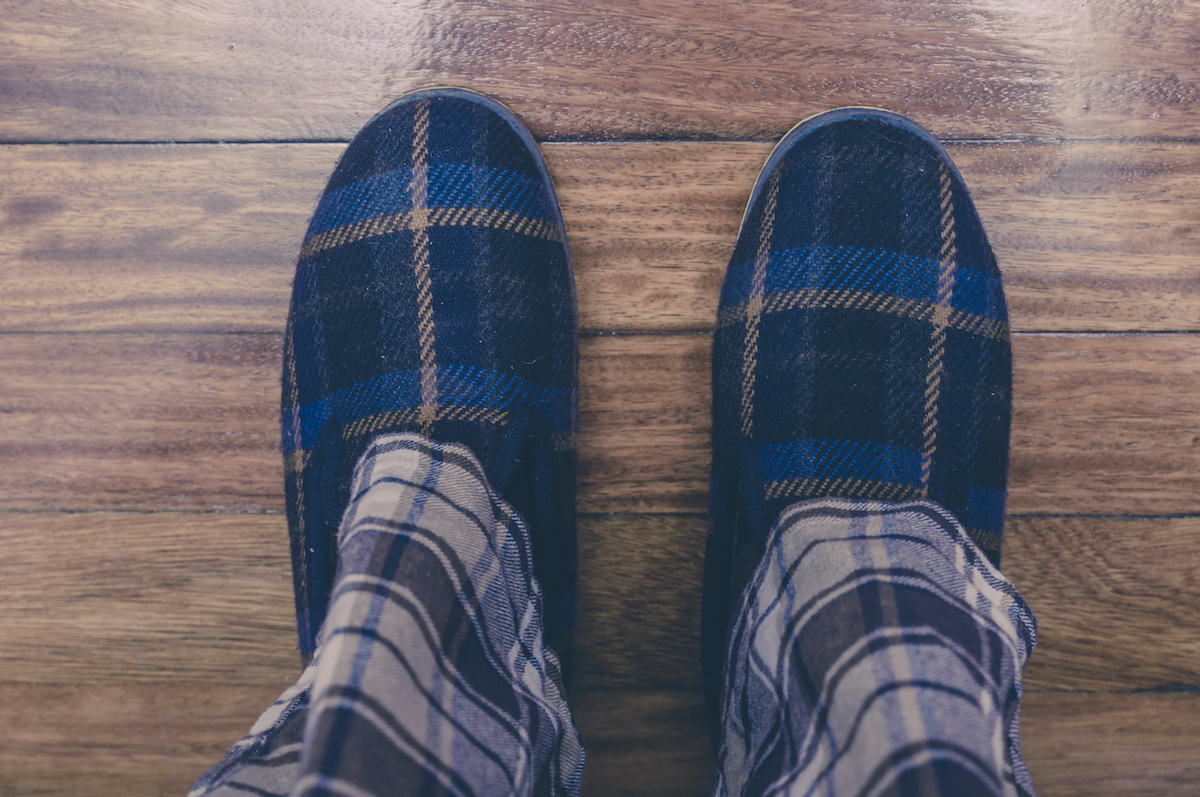
A study conducted at The University of Sydney and published in Nature and Science of Sleep found that wearing woolen clothes to bed helps speed up sleep onset in comparison to cotton. Young adults wearing cotton pajamas took an average of 15 minutes to fall asleep, while those wearing sleepwear made out of merino wool fell asleep after just 11 minutes. A second study published in the same journal focusing on older adults reports an even greater effect: Just 12 minutes to fall asleep with wool, in comparison to 27 minutes while wearing cotton.
“Not so long ago sleeping under wool bedding was the norm, and science is now rediscovering the benefits of sleeping in wool,” says study co-author Paul Swan, M.D. from the University of Sydney. “Maybe it is not a coincidence, because wool regulates your body temperature far better, keeping you in what is known as ‘the thermal comfort zone’. You therefore not only fall asleep quicker, sleep longer, but also have deeper, better quality sleep.” And for more ways to sleep better, consider trying This Easy Trick for “Falling Asleep in 5 Minutes” That’s Going Viral.
Don’t: Sleep in the same outfit all year long
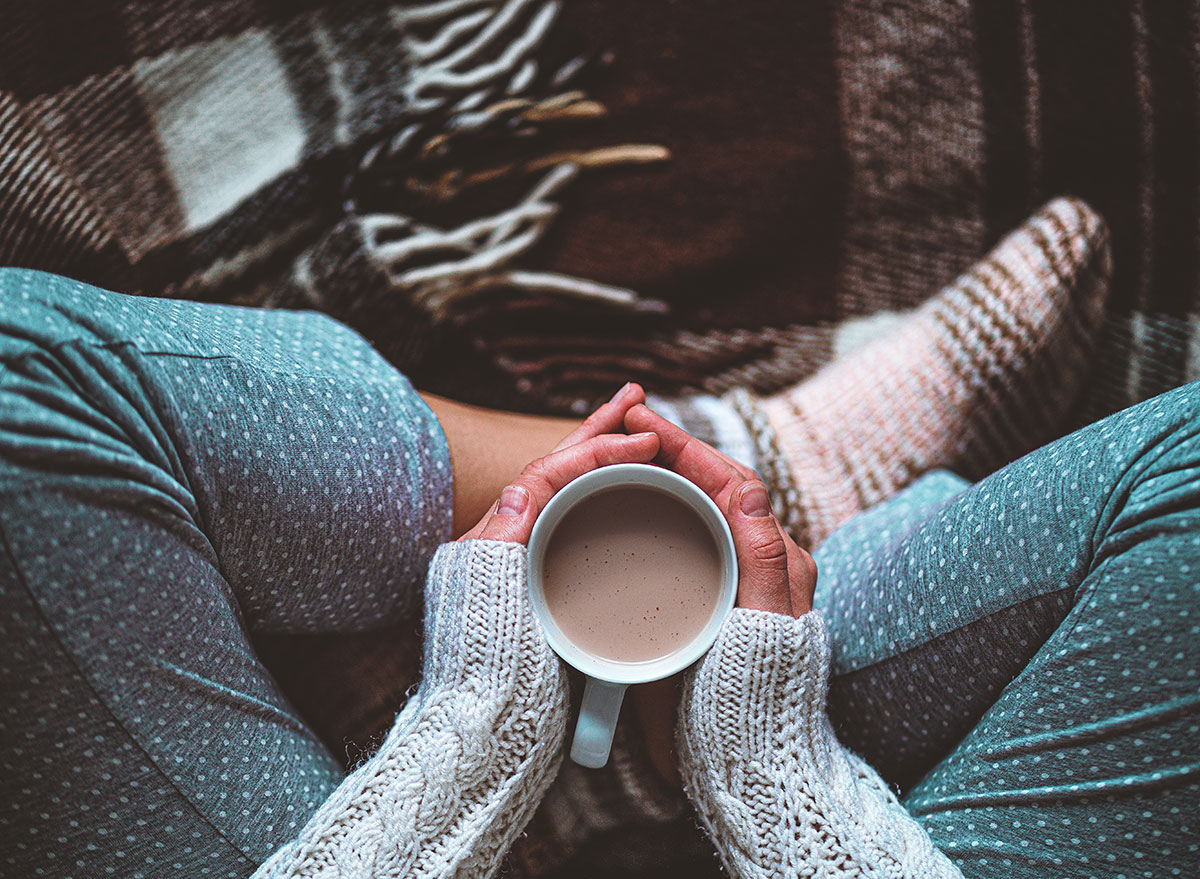
Of course, what you choose to wear to bed each night should also depend a bit on the season of the year and the temperature in your bedroom. According to Heather Wright, M.D., the ideal bedroom temperature for sleep is roughly 65 degrees Fahrenheit, although that can certainly vary from person to person. “What you wear to bed should be complementary to the temperature of your bedroom. In the summer, try wearing lighter fabrics to bed, like linen. In the winter, keep warm by using flannel or wool pajamas and socks,” adds the Sleep Foundation’s Foley. And for more sleep news, see here for the One Secret Side Effect of Having Weird Dreams, Says Study.
